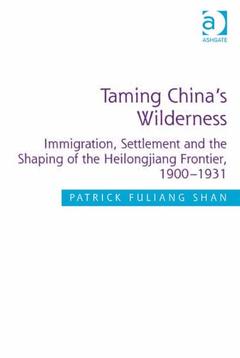Description
Taming China's Wilderness
Immigration, Settlement and the Shaping of the Heilongjiang Frontier, 1900-1931
Author: Shan Patrick Fuliang
Language: English
Subject for Taming China's Wilderness:
Keywords
chinese; eastern; railway; heilongjiang; renmin; chubanshe; proper; songnen; plain; russian; Young Men; Heilongjiang Renmin Chubanshe; Chinese Eastern Railway; Song Nen Plains; Zhao Erxun; Jing Ji; Railway Zone; County Seat; China Proper; Han Farmers; Chinese Government; Russian Inuence; Bandit Raids; Education Land; Ma Fang; Bandit Leaders; Mongols; Russian Soldiers; Chinese Ocials; North Manchuria; Unwelcome Guests; Indigenous Ethnic Minority Groups; Sufficient Sun; Shi Fang; Bandit Attacks
Approximative price 183.14 €
In Print (Delivery period: 14 days).
Add to cartPublication date: 04-2014
Support: Print on demand
Approximative price 61.25 €
In Print (Delivery period: 14 days).
Add to cartPublication date: 03-2017
· 15.6x23.4 cm · Paperback
Description
/li>Contents
/li>Biography
/li>




